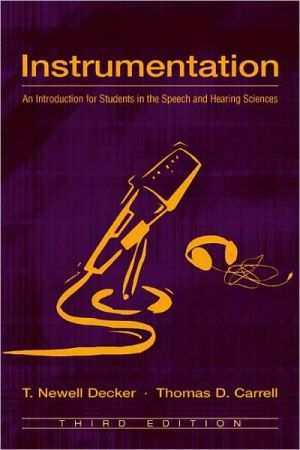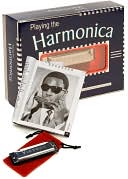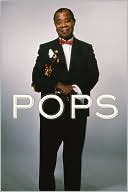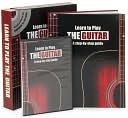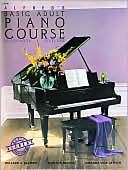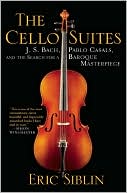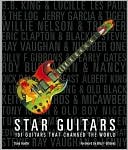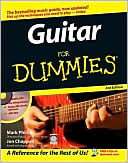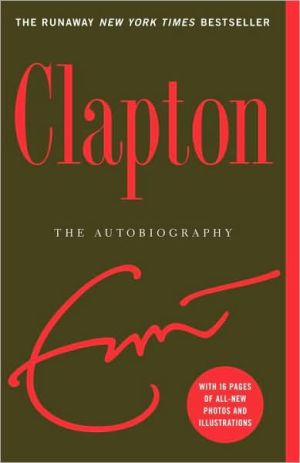Instrumentation: An Introduction for Students in the Speech and Hearing Sciences
"Instrumentalist: An Introduction for Students in the Speech and Hearing Sciences, Third Edition, is a practical introductory guide to instrumentation for undergraduates and beginning graduates in audiology and speech pathology. This much anticipated revision retains the successful features of the first two editions, while updating the technology coverage. New material has also been added where appropriate." This readable and concise textbook assumes the reader has little prior knowledge of...
Search in google:
For this third edition of an introductory guide to instrumentation for undergraduates and beginning graduates in audiology and speech pathology, Decker and Carrle, professors of audiology and communication disorders, respectively, at the University of Nebraska, have added a new chapter on recent developments in digital and consumer electronics relevant to laboratory instrumentation. They offer a broadly descriptive approach accompanied by step-by-step exercises and equipment flowcharts. No prior knowledge of electronics is assumed. Annotation ©2004 Book News, Inc., Portland, OR Doody Review Services Reviewer:Diane M Brewer, MA(George Washington University)Description:This is a basic textbook written for undergraduates on electricity and electronic equipment used in speech and hearing. This is the third edition of a book first published 12 years ago. Purpose:The purpose is to provide students with a basic understanding of major pieces of instrumentation in speech and hearing clinics and laboratories. There is a need for a simple introductory book and this one meets the author's objectives.Audience:The book was originally written for undergraduate students, but it is equally suited for beginning graduate students in speech and hearing. The author's interest in instrumentation and the desire to help students overcome anxiety and have an interest in instrumentation is the motivation for writing the book.Features:A chapter giving a simple explanation of basic electricity begins the book. Subsequent chapters discuss classes of instrumentation: transducers, spectrum analyzers, amplifiers, attenuators, filters, tape recorders, and sound level meters. Two chapters cover combining equipment in arrays and interfacing laboratory equipment. All chapters are relatively brief and simply written. Most end with practical exercises to reinforce material and a list of key terms. Further readings on each topic are provided for those who wish to develop a more advanced understanding of the material. The book finishes with a glossary of terms.Assessment:This book is brief and simply and clearly written. It reviews major categories of instrumentation commonly used in the field of speech and hearing and gives clear explanations of major terms. It will be very useful to the beginning student in speech and hearing for both clinical work and research. This updated edition is welcome due to the constant changes in technology.
IllustrationsPreface to Third EditionPreface to Second EditionPreface to First EditionIntroduction1Introduction to Basic Electricity12Combining Equipment Into Arrays173Transducers364Digital Signal Processing and Experimental Control535Spectrum Analysis696Amplifiers, Attenuators, Mixers, and Filters887CRT Displays, Oscilloscopes, Recording, and Plotting1048Analog and Digital Magnetic Tape Recorders1169Sound Level Meters13610Interfacing Laboratory Equipment With Consumer Electronics149Glossary165Suggested Readings173Author Index175Subject Index179
\ From The CriticsReviewer: Diane M Brewer, MA(George Washington University)\ Description: This is a basic textbook written for undergraduates on electricity and electronic equipment used in speech and hearing. This is the third edition of a book first published 12 years ago. \ Purpose: The purpose is to provide students with a basic understanding of major pieces of instrumentation in speech and hearing clinics and laboratories. There is a need for a simple introductory book and this one meets the author's objectives.\ Audience: The book was originally written for undergraduate students, but it is equally suited for beginning graduate students in speech and hearing. The author's interest in instrumentation and the desire to help students overcome anxiety and have an interest in instrumentation is the motivation for writing the book.\ Features: A chapter giving a simple explanation of basic electricity begins the book. Subsequent chapters discuss classes of instrumentation: transducers, spectrum analyzers, amplifiers, attenuators, filters, tape recorders, and sound level meters. Two chapters cover combining equipment in arrays and interfacing laboratory equipment. All chapters are relatively brief and simply written. Most end with practical exercises to reinforce material and a list of key terms. Further readings on each topic are provided for those who wish to develop a more advanced understanding of the material. The book finishes with a glossary of terms.\ Assessment: This book is brief and simply and clearly written. It reviews major categories of instrumentation commonly used in the field of speech and hearing and gives clear explanations of major terms. It will be very useful to the beginning student in speech and hearing for both clinical work and research. This updated edition is welcome due to the constant changes in technology.\ \ \ 4 Stars! from Doody\ \
